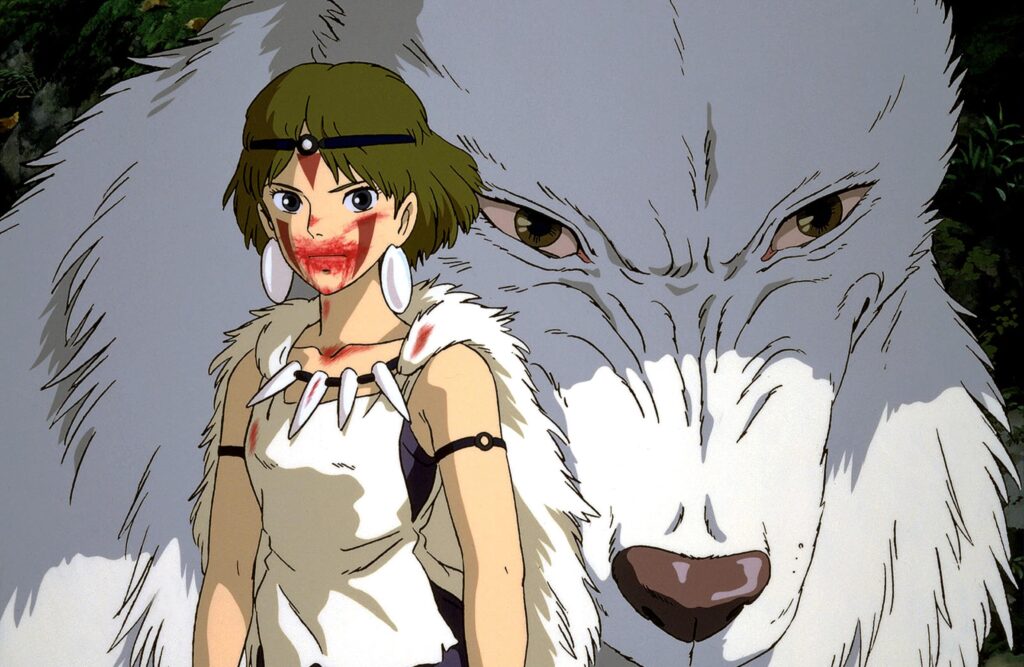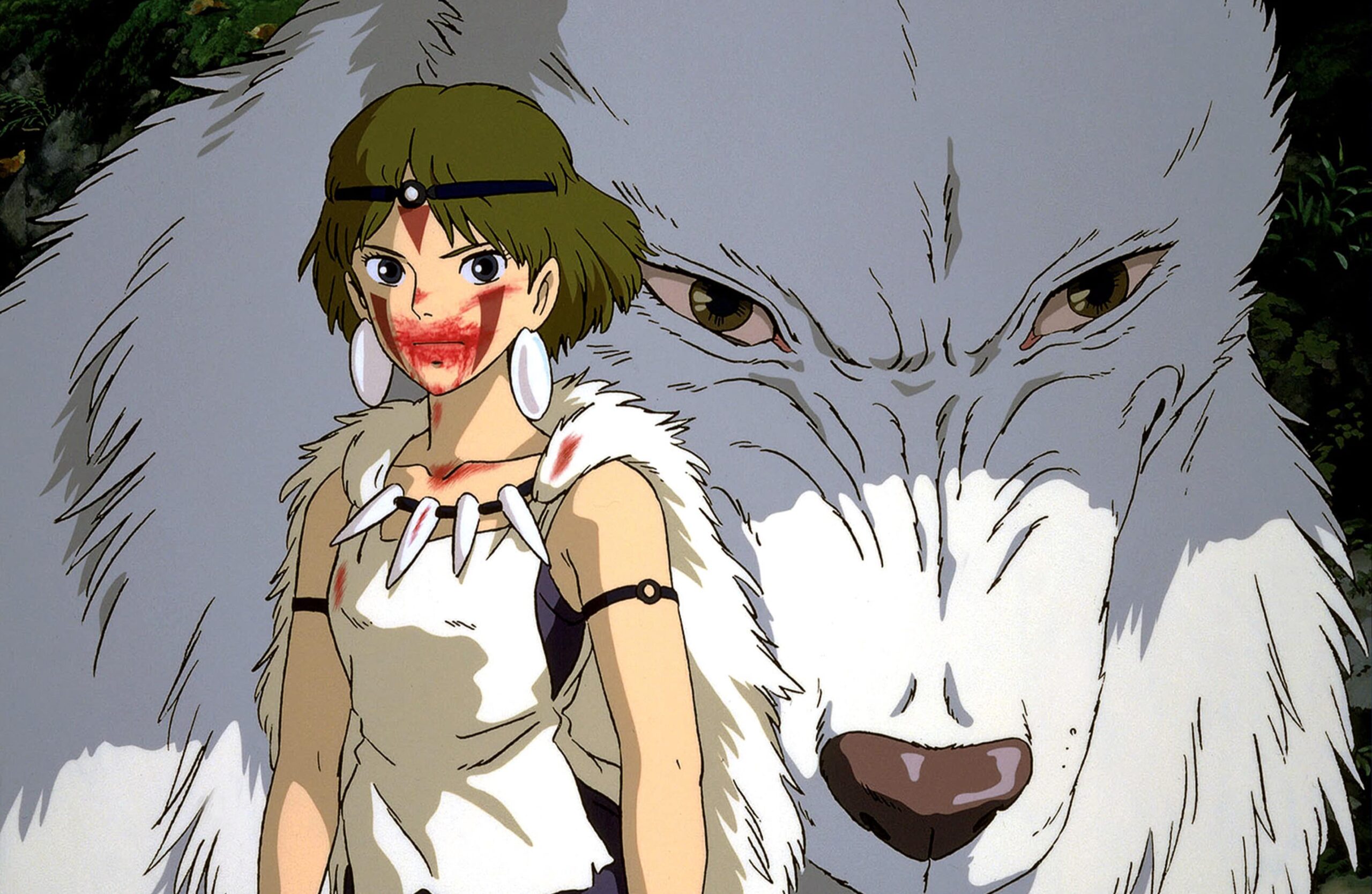
Princess Mononoke: Unveiling the Complex Character of San
Princess Mononoke, a masterpiece of Japanese animation directed by Hayao Miyazaki, is celebrated for its breathtaking visuals, profound themes, and, most notably, its compelling characters. Among these, Princess Mononoke herself, also known as San, stands out as a particularly captivating figure. This article delves into the multifaceted nature of the Princess Mononoke main character, exploring her origins, motivations, relationships, and the enduring impact she has on the film’s narrative and broader cultural landscape.
The Origins of a Wolf Girl
San’s backstory is crucial to understanding her character. Abandoned by her human parents, who attempted to appease the wolf goddess Moro, San was raised as one of Moro’s own. This unique upbringing instilled in her a deep connection to the forest and a fierce animosity towards humanity, whom she views as destroyers of nature. This duality – being human by birth but wolf by upbringing – forms the core conflict within her character.
Moro, the wolf goddess, acts as San’s surrogate mother, providing her with protection and guidance. The bond between them is one of loyalty and mutual respect. San fiercely defends Moro and the forest against the encroaching Iron Town and its leader, Lady Eboshi. This defense stems not just from loyalty, but also from a deeply ingrained sense of justice and a desire to protect the only home she has ever known.
Motivations and Conflicts
The Princess Mononoke main character’s primary motivation is to protect the forest and its inhabitants from the destructive forces of humanity. She sees Lady Eboshi and the people of Iron Town as a direct threat to the natural world, and she is willing to fight to the death to defend it. This unwavering commitment to her cause often puts her at odds with others, including Ashitaka, the film’s male protagonist.
Ashitaka, cursed by a corrupted boar god, seeks a cure and becomes entangled in the conflict between the forest and Iron Town. He recognizes the validity of both sides, understanding the desperation of the humans and the plight of the forest. This perspective clashes with San’s black-and-white worldview, leading to a complex and often turbulent relationship between them. San struggles to reconcile Ashitaka’s compassion for both humans and nature, challenging her deeply held beliefs.
The internal conflict within Princess Mononoke is another key aspect of her character. She grapples with her own identity, torn between her human origins and her wolf upbringing. She questions whether she truly belongs in the forest and whether she can ever truly escape her human nature. This internal struggle is visually represented by the markings on her face and body, a constant reminder of her dual identity.
Relationships and Development
San’s relationship with Ashitaka is central to her character development. Initially, she views him with suspicion and hostility, seeing him as another human threat to the forest. However, as she witnesses his compassion and his genuine desire to find a peaceful resolution, she begins to question her own assumptions. Ashitaka’s unwavering belief in her goodness and his refusal to see her as simply a “wolf girl” gradually softens her hardened exterior.
Their interactions are marked by moments of both conflict and tenderness. Ashitaka’s attempts to bridge the gap between humans and nature challenge San’s worldview, forcing her to confront her own prejudices. Through their shared experiences and mutual respect, they begin to understand each other’s perspectives, ultimately forging a deep and meaningful connection. This connection doesn’t necessarily lead to a romantic relationship in the traditional sense, but rather a profound understanding and acceptance of each other’s roles in the world.
The influence of Moro is also crucial. While Moro encourages San’s hatred of humans, she also provides her with a sense of protection and belonging. Moro’s death serves as a catalyst for San, forcing her to confront the consequences of her actions and to consider the future of the forest. It’s a pivotal moment that pushes San to consider a path beyond vengeance.
Symbolism and Themes
Princess Mononoke is a powerful symbol of the conflict between humanity and nature. Her character embodies the wildness and untamed beauty of the forest, as well as the potential for both destruction and redemption within humanity. She represents the consequences of unchecked industrialization and the importance of finding a balance between human needs and environmental preservation.
The film explores themes of environmentalism, industrialization, and the interconnectedness of all living things. San’s character serves as a focal point for these themes, highlighting the devastating impact of human actions on the natural world and the urgent need for a more sustainable way of life. Her unwavering commitment to protecting the forest underscores the importance of preserving biodiversity and respecting the delicate balance of ecosystems.
Furthermore, Princess Mononoke’s story touches upon the complexities of identity and belonging. Her struggle to reconcile her human origins with her wolf upbringing reflects the broader human experience of searching for a sense of place and purpose in the world. It speaks to the challenges of navigating cultural differences and finding common ground in a world often divided by conflict and prejudice. [See also: Understanding the Environmental Themes in Princess Mononoke]
The Legacy of Princess Mononoke
Princess Mononoke remains a timeless classic, resonating with audiences of all ages and backgrounds. The Princess Mononoke main character, San, is a complex and compelling figure who continues to inspire and captivate viewers. Her unwavering commitment to protecting the environment, her internal struggle with identity, and her ultimately hopeful outlook on the future make her a truly unforgettable character.
Her influence extends beyond the realm of animation. San has become a symbol of environmental activism and a reminder of the importance of respecting the natural world. Her story serves as a powerful call to action, urging viewers to consider their own impact on the environment and to strive for a more sustainable future. The nuanced portrayal of Princess Mononoke also contributes to discussions about identity, belonging, and the complexities of human-nature relationships.
The film’s enduring popularity and critical acclaim are a testament to Miyazaki’s masterful storytelling and the power of its central characters. San’s journey from a fierce and vengeful warrior to a more nuanced and compassionate individual is a compelling narrative that continues to resonate with audiences today. She embodies the spirit of resilience, the importance of standing up for what you believe in, and the potential for finding common ground even in the face of seemingly insurmountable differences. She is a character that stays with you long after the credits roll, prompting reflection on our own roles in shaping the world around us.
Ultimately, the portrayal of Princess Mononoke encourages empathy and understanding. By showcasing the perspectives of both humans and nature, the film challenges viewers to consider the complexities of environmental issues and to recognize the interconnectedness of all living things. San’s journey serves as a reminder that finding solutions to these challenges requires a willingness to bridge divides, to challenge preconceived notions, and to embrace a more sustainable and harmonious way of life. The character of Princess Mononoke, and her story, will continue to inspire and challenge audiences for generations to come.
The impact of the Princess Mononoke film and its main character extends far beyond entertainment. It has sparked conversations about environmental responsibility, cultural understanding, and the importance of empathy. San’s character, in particular, serves as a powerful role model, demonstrating the strength and resilience required to fight for what you believe in, even in the face of overwhelming odds. Her story is a testament to the power of individual action and the potential for positive change in a world often plagued by conflict and destruction. [See also: Hayao Miyazaki’s Enduring Influence on Animation]
In conclusion, Princess Mononoke, San, is more than just a character in an animated film; she is a symbol of hope, resilience, and the enduring power of the human spirit. Her story is a reminder that even in the darkest of times, there is always the potential for healing, reconciliation, and a more sustainable future. The complexities of the Princess Mononoke main character will continue to be analyzed and appreciated for years to come.

